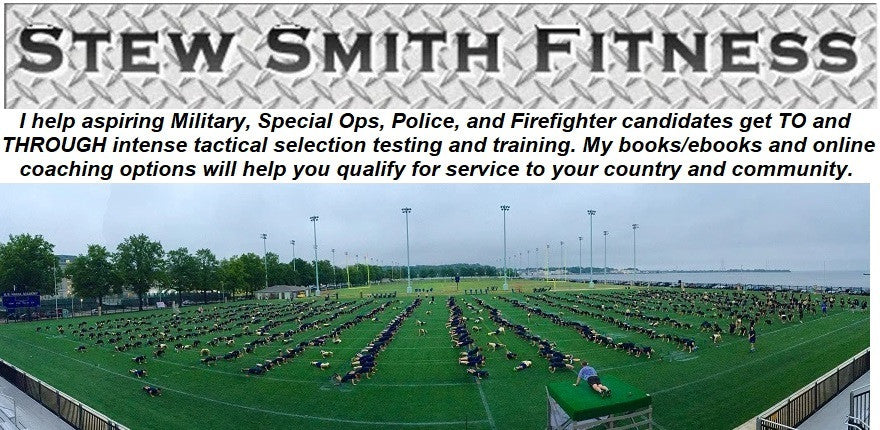One should realize that the standard fitness test most groups take is NOT a perfect marker of one's skills as a military member, police officer, SWAT Team or other Special Operator. Many people ask why do I need to do these fitness tests as it has nothing to do with my job. However, statistically speaking, it has been proven in many programs that the higher you score on the "entrance exam" fitness test the better you will do at basic training programs. But, it is also true that it does not matter how high you score on a pushup, pullup, or running test, it does not equally translate to how well you operate with a weapon in a high stress environment. So for the sake of argument let's call the standard Physical Fitness Test (PFT - pushups, situps, sit and reach, and 1.5 mile run) that most military members take is just that - a fitness and health test. This test is an indicator of basic cardiovascular function, core movement ability and flexibility, and upper body conditioning. That is all the PFT will give you. But that is fine - we need to prove our troops are healthy on a regular basis.
An Option: An additional test can be performed that can contain both cardiovascular performance, strength, endurance, agility, team work, speed, and tactical applications like shooting. This test can be developed to hone skills, build combat skills in a safe environment, and just be good training for the soldiers on any tactical level. In the SEAL Teams, our training department would develop Combat Conditioning Courses that usually included, rucking with gear, swimming with gear, obstacle courses, more running, and shooting. These events could last as short as 20-30 minutes or as long as several hours. What our trainers did was develop tasks that mimicked the actual job performance of our duties in future or typical missions that we could be called to perform.
An Idea of a Competition Combat Course from PG County SWAT Team Competition
To start off the race your team began a 3.1 mile trail / road run, came to a creek and had to cross it. Then the teams had a wet quarter-mile run to the Zodiac F470s that the team of four used to paddle across a river and back and then land carry the boat a few hundred yards and quickly store their gear. Then they ran again to the field exercises. They were met with a tractor tire and each team member had to flip it 14 times before they could go to the next obstacle. Following the tire flip was a shuttle run. Then, each team had to do 100 pushups and 100 sit-ups as a team (each 25 reps individually). After the PT, each member had to individually pull a rope tied to two tires 30 yards. After the pull, each member had to pick up two five gallon buckets filled with concrete and carry them for 40 yards, then the teams had to run with a PVC pipe half full of water and run 60 yards round trip in a relay fashion. Finally, the injured man drill was to carry one person of the team 60 yards and then it was a sprint to the finish about 60 yards away.
Another option is to perform a combat conditioning course on a moments notice, so there is no preparation for it. In the Spec Ops world, things happen quickly and your previous training all comes into play at this critical moment in time. Your standard operating procedures are tested at this point, teamwork, physical ability, and tactical proficiency.
Designing a course should be job specific. For instance, the admin officer or supply chief of the command should not be required to do this type of training. Though with some imagination I am sure you could develop a challenge for any one in your command that is job related. It does not have to be a physical challenge - just job related.
